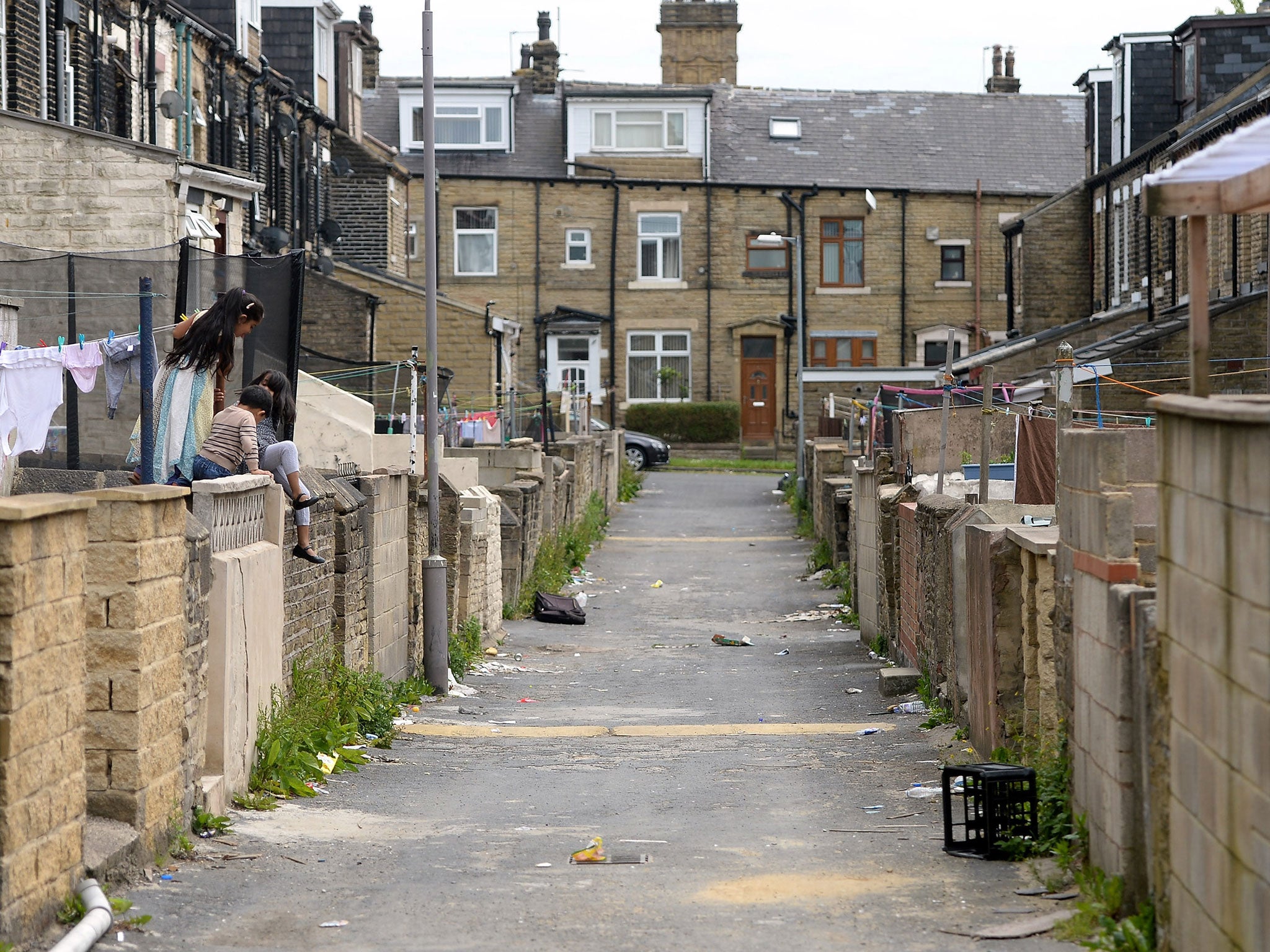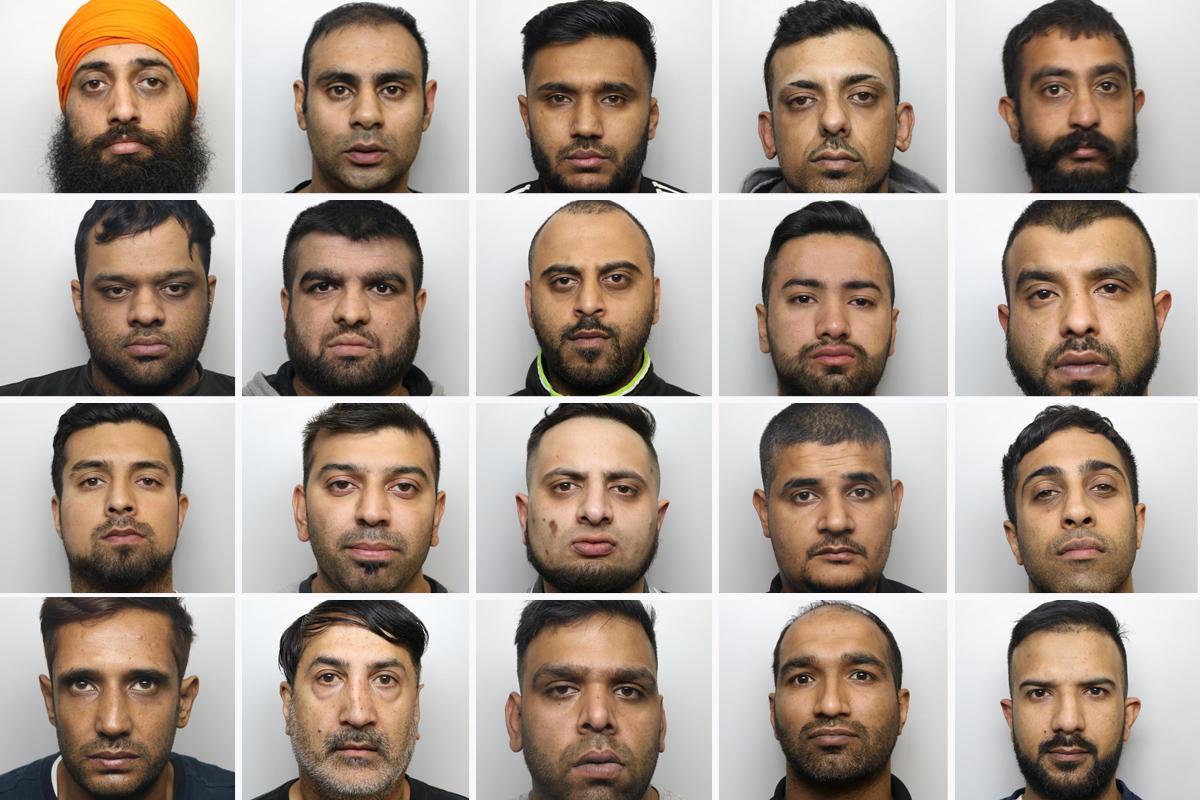Grooming ‘epidemic’ as almost 19,000 children identified as sexual exploitation victims in England
Exclusive: Campaigners call for action as Sajid Javid’s promised review of grooming gang ‘characteristics’ absent from Queen's Speech

Your support helps us to tell the story
From reproductive rights to climate change to Big Tech, The Independent is on the ground when the story is developing. Whether it's investigating the financials of Elon Musk's pro-Trump PAC or producing our latest documentary, 'The A Word', which shines a light on the American women fighting for reproductive rights, we know how important it is to parse out the facts from the messaging.
At such a critical moment in US history, we need reporters on the ground. Your donation allows us to keep sending journalists to speak to both sides of the story.
The Independent is trusted by Americans across the entire political spectrum. And unlike many other quality news outlets, we choose not to lock Americans out of our reporting and analysis with paywalls. We believe quality journalism should be available to everyone, paid for by those who can afford it.
Your support makes all the difference.Almost 19,000 children have been sexually groomed in England in the past year, according to official figures that have prompted warnings of an “epidemic”.
Campaigners say the true figure is far higher and accused the government of failing to tackle child sexual exploitation, despite promises made after high-profile cases in Rotherham and Rochdale.
More than 18,700 suspected victims of child sexual exploitation were identified by local authorities in 2018-19, up from 3,300 five years before.
Sarah Champion, the Labour MP for Rotherham, said the figures show that grooming “remains one of the largest forms of child abuse in the country”.
“Too many times, government has said it will ‘learn lessons’, yet 19,000 children are still at risk of sexual exploitation,” she told The Independent.
“The government has singularly failed to tackle this issue head on. Its approach has been piecemeal and underfunded.”
Sajid Javid promised a review into the characteristics of grooming gangs in 2018, saying high-profile cases included a “high proportion of men of Pakistani heritage” and that “cultural reasons” could be at play.
The Independent understands that the Home Office started internal analysis of data from police and other agencies, and will use it to inform policy development and prevention strategies.
But the findings may not be published and the Queen’s Speech, which set out Boris Johnson's legislative agenda, did not include any mention of a public review.
Department for Education statistics on children referred to social care show the number of known cases dramatically increasing from 2013, when grooming was recorded as an assessment factor for the first time, to a peak of 20,000 in 2017-18.
Several grooming gang investigations and prosecutions are ongoing across the country, including in Huddersfield where several abusers have already been jailed in a series of linked trials.
In Rotherham, where revelations over the abuse of an estimated 1,500 victims sparked a national scandal in 2012, the National Crime Agency has identified more than 190 suspects.
Sammy Woodhouse, a Rotherham victim who helped expose the scandal, said she is still receiving reports of current abuse in parts of the country.
“You hear this bulls*** line, ‘lessons have been learned’, but they haven’t learned anything,” she told The Independent.
“I still hear a lot about the authorities aren’t doing things as they should. It’s not very often I hear something good and for all different reasons – if the police won’t act on reports, people feel they’re not being listened to or supported properly, or information not being shared.”
Ms Woodhouse, who was abused by rapist Arshid Hussain from the age of 14, said the scale of child sexual exploitation currently reported by local councils did not surprise her.
“I think the most scary thing is all the people it’s happening to that they don’t know about,” she added. “Most won’t report and they go under the radar.
“I’ve said for years that this country’s in epidemic when it comes to abuse and exploitation. Authorities claim it’s under control but it’s not.”
The Department for Education statistics showed that Lancashire recorded the highest number of children (624) as grooming victims out of any single local authority area, followed by Birmingham (490), Surrey (447), Bradford (414) and Gloucestershire (409).
The combined totals of Leeds and neighbouring Bradford, where investigations are ongoing following the imprisonment of nine grooming gang members earlier this year, would be the highest at 649.
Drugs and alcohol are frequently used by grooming gangs to incapacitate girls or coerce them into sex, with the criminality later discouraging victims from going to police.
There are several methods of grooming, with the best-known “boyfriend” model seeing an abusive relationship used to force victims into sex with others.
Children can also be trafficked, befriended online or – in the so-called party – targeted by groups of men who lure them to gatherings with offers of drinks, drugs, money and car rides.
Some sexual exploitation has been linked to criminal gangs, who also pay or force girls to run drugs or keep them in their homes.
In high-profile cases such as Rotherham and Rochdale, perpetrators have been much older than their victims, but police say peer-on-peer abuse by teenagers from the same school or area is more common in some areas.
Simon Bailey, the National Police Chiefs’ Council lead for child protection, said officers were “committed to doing all we can to pursue and prosecute criminals who exploit and abuse young people”.
“More must be done to stop abuse happening in the first place,” he added. “Those with direct contact with children need to ensure they are keeping them safe from risks through honest conversations, education and appropriate safeguarding.

“Alongside that, internet and social media companies need to acknowledge their responsibility, do more to stop children accessing harmful content and prevent abuse on their platforms.”
Ms Champion called for prevention efforts, including youth clubs, specialist services and sexual health clinics, police and the Crown Prosecution Service to receive more funding.
“We cannot allow grooming to fall out of the spotlight, because sexual exploitation always flourishes in the shadows,” she added.
The Home Office has granted money to large-scale investigations including in Rotherham and Norfolk, and allocated £7m to organisations supporting survivors of child sex abuse for 2019-20.
A spokesperson said: “The Home Office is committed to tackling child sexual abuse and will leave no stone unturned in tackling this abhorrent behaviour.
“This is why we launched the Independent Inquiry into Child Sexual Abuse to get to the truth, expose what has gone wrong and learn lessons for the future. The inquiry operates independently of government and, within its terms of reference, decides for itself what it investigates.
"The inquiry is investigating institutional responses to child sexual exploitation by organised criminal networks with public hearings set for the spring of 2020.”
In a joint statement, Lancashire Police and County Council said they were “not complacent” about tacking child sexual exploitation.
“We acknowledge that some areas of the county are more at risk and we will continue to work with our partners to protect children, prevent child abuse, help victims and target offenders, ultimately bringing them to justice,” a spokesperson added.
Birmingham Children’s Trust said it was working with the police, NHS, schools and partner organisations to improve the identification of young people at risk.
Gloucestershire County Council said increased awareness of child sexual exploitation had led to the identification of more child victims.
“We will continue to work with the police and other partners including schools, to prevent it and support victims and their families,” it added.
Bradford Council said the number of children assessed as being at risk of grooming was now falling, adding: “We take child sexual exploitation very seriously and have worked with young people, schools and community organisations to raise awareness of this terrible crime.”
Join our commenting forum
Join thought-provoking conversations, follow other Independent readers and see their replies
Comments